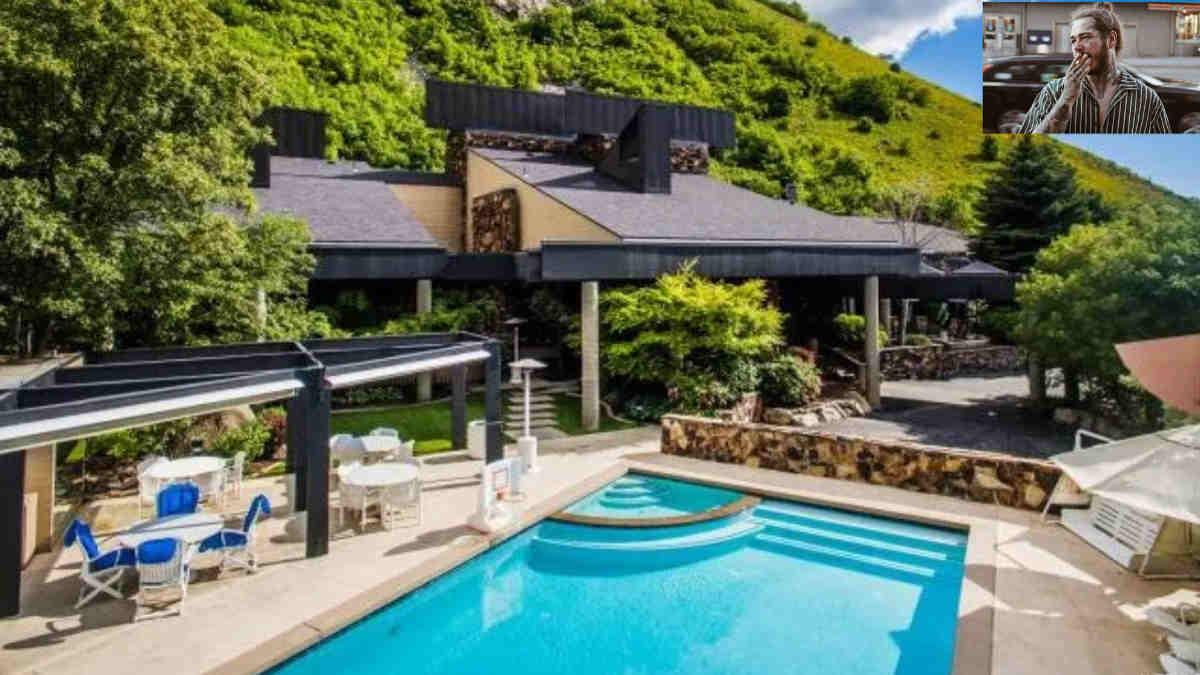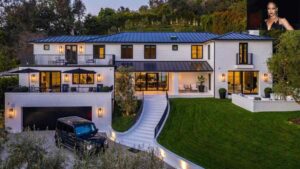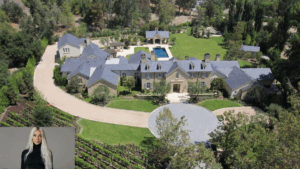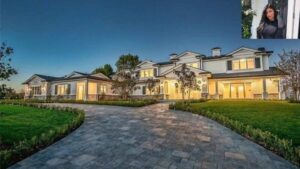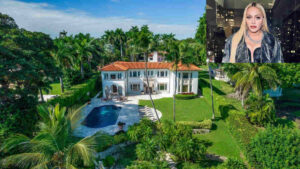There’s a strange kind of poetry in the fact that Post Malone—tattooed, genre-defying, and famously fond of Bud Light—calls the quiet canyons of Utah home. While most celebrities stack glass mansions in Beverly Hills or Miami Beach, Post traded red carpets for red rock. It’s not a publicity stunt or a phase. His Utah estate is a purpose-built fortress, a retreat engineered for creativity, privacy, and a bit of the post-apocalyptic flair you’d expect from someone who once said he’s ready for the end of the world.
But there’s more to this real estate story than just where he sleeps. From underground bunkers to in-house studios, Post’s properties are reflections of his mindset—and perhaps a roadmap to understanding the man behind the music. What does a rockstar’s house say when it’s built to keep the world out? Let’s take a look inside.
Why Utah? The Unlikely Location of a Hip-Hop Star’s Fortress
For a man who’s sold out arenas and topped charts with genre-blending anthems, Post Malone’s decision to settle in Utah might seem like a head-scratcher—until you look closer. In interviews, he’s been candid about his discomfort with the chaos of Los Angeles, calling it “a struggle to stay grounded.” Utah, with its expansive skies and relative anonymity, offered something LA couldn’t: stillness.
But this isn’t just about escaping paparazzi. It’s about aligning lifestyle with identity. Utah gives Post the space to breathe, create, and shoot guns in his backyard—a hobby he’s unapologetically vocal about. The state’s looser regulations, rugged terrain, and cultural independence match his ethos as an artist who’s always defied the mold.
He’s not alone, either. In recent years, more high-profile names have ditched coastal enclaves in favor of places like Montana, Wyoming, and yes, Utah—part of a broader migration of celebrities seeking privacy, acreage, and authenticity. For Post, the move wasn’t just practical; it was philosophical. Utah became less of a hiding place and more of a home base—a creative and personal sanctuary built on his terms.
Inside Post Malone’s Utah Compound: Where Apocalyptic Prep Meets Art Deco
Post Malone’s Utah mansion doesn’t whisper luxury—it shouts personality. Tucked into the slopes outside Salt Lake City, the sprawling compound is less “celebrity showpiece” and more “mad genius hideaway.” Walking through its halls feels like stepping into the mind of an artist who grew up on both Call of Duty and Johnny Cash. There’s a method to the madness—equal parts bulletproof and beautiful.
At the heart of the estate is a high-tech recording studio, custom-built for late-night sessions and sonic experimentation. Nearby, rooms are stacked with rare memorabilia: vintage arcade cabinets, samurai swords, Pokémon cards in glass cases. The design toggles between polished and post-apocalyptic—one hallway might echo Art Deco glamour, while another leads to a reinforced panic room or a fully stocked underground bunker. Yes, really.
Outside, the desert landscape stretches for miles, offering the kind of isolation that feels deliberate, almost meditative. This isn’t just a home—it’s a fortress of solitude, imagination, and survivalist flair. For Post, it’s both a creative cocoon and a physical manifestation of his artistic contradictions: vulnerability wrapped in bravado, chaos balanced by control. It’s not for everyone, but that’s the point. This is a house built for him.
Beyond Utah: A Peek into Post’s Property Portfolio
Before Post Malone planted roots in Utah, his real estate journey looked a lot like his early rise to fame—nomadic, experimental, and tinged with excess. In the late 2010s, during the Beerbongs & Bentleys era, Post was living in a multi-million-dollar home in Los Angeles’ San Fernando Valley. It was everything you’d expect from a rising pop-rap star: sleek finishes, plenty of space for partying, and proximity to Hollywood. But Post never seemed fully at home in that world.
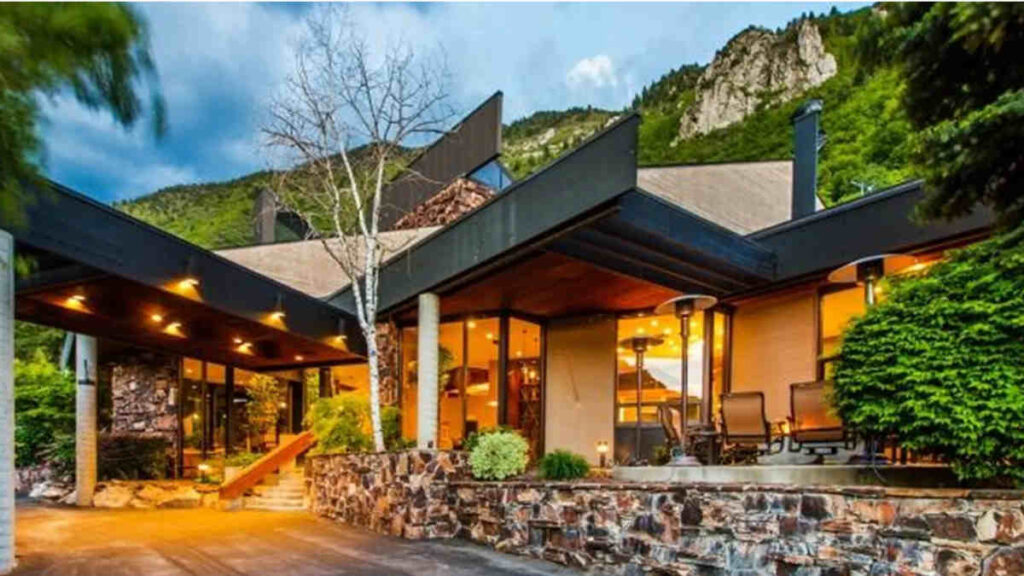
Texas, his childhood home state, also played a recurring role. He reportedly purchased a ranch-style property near Grapevine, where he spent some of his formative years. That move hinted at an early longing for land, distance, and a return to something more grounded.
There’s a pattern here: The Post starts where the spotlight shines brightest, but gradually veers off the mainstream path. Whether it’s a minimalist Texas home or a doomsday-ready mansion in Utah, his real estate choices suggest a slow but deliberate shift—from visibility to privacy, from performing to preserving. It’s less about square footage, more about freedom.
Real Estate as Identity: What Post’s Homes Say About Him
Post Malone’s Utah mansion isn’t just a place to live—it’s a mirror. A mirror of his contradictions, his comforts, his chaos. The security systems and underground bunkers whisper anxiety; the vintage arcade machines and samurai swords shout nostalgia. Every corner of the home feels curated not for Instagram but for intimacy—Post’s version of peace.
The mansion’s design reflects a man who lives between extremes: global fame and rural solitude, emotional openness and hyper-controlled privacy. It’s cowboy boots on marble floors, Bud Light in a gold fridge. The bunker might raise eyebrows, but it’s not paranoia—it’s preparation. For a guy who’s seen both the heights and the hollowness of celebrity, the house becomes a kind of armor.
Where others flaunt opulence, Post builds a fortress. Not just to keep others out, but to keep himself grounded. His real estate choices don’t scream “look at me”—they quietly ask, “do you see who I am?”
Dollars, Deals & Dirt: What Did He Pay for All This?
Post Malone reportedly purchased his Utah compound for around $3 million in 2018—a figure that, at first glance, feels almost modest for a global superstar. But this isn’t Beverly Hills; in northern Utah, that kind of budget buys serious land and privacy. His estate spans nearly 7 acres, with rumors of extensive custom renovations—recording studios, a bunker, high-end security—which likely pushed the total investment significantly higher.
In comparison, a similar-sized compound in LA would run $15–20 million or more, with less land and far more scrutiny. So, while Post didn’t buy the priciest property on the market, he may have made a smarter play: more house, less hype.
As for other properties, records on past homes in Los Angeles or Texas remain vague. But across the board, his strategy seems more personal than portfolio-driven. These aren’t vanity buys—they’re deeply aligned with who he is and how he wants to live.
Net Worth in Real Estate Context: How Post Compares to His Peers
With an estimated net worth of $50 million, Post Malone sits comfortably among today’s music elite—but unlike some of his peers, he’s not pouring that wealth into glassy sky mansions or flipping condos for sport. Compare that to Justin Bieber, who owns a $25 million Beverly Hills estate and frequently makes real estate headlines, or Travis Scott, whose Houston mega-mansion reportedly cost over $23 million and looks like a Bond villain’s lair.
The Weeknd takes it even further, dropping $70 million on a Bel-Air compound in 2021, one of the largest celeb home purchases that year. Post’s $3 million Utah buy? Almost humble by comparison. But that’s the point.
Where others build palaces for prestige, Post buys land for peace. He’s not chasing resale value or architectural clout—he’s curating a lifestyle. While some celebrities treat property like a portfolio move, Post treats it like a sanctuary. It’s not about owning more—it’s about owning better.
His strategy doesn’t shout wealth—it whispers independence. And in a world where excess is the norm, that quiet kind of power says a lot.
The Mansion as Muse: How His Environment Shapes the Music
Isolation has a way of clarifying sound—and for Post Malone, Utah’s wide-open stillness seems to echo through his music. Much of “Twelve Carat Toothache” was reportedly written and recorded in his home studio, deep inside his self-made fortress. In interviews, Post has described the experience as “introspective,” crediting the silence and solitude with helping him “clear the noise” and focus on his emotions.

The result? Songs that feel raw, atmospheric, even haunted at times. Tracks like “Euthanasia” and “Love/Hate Letter to Alcohol” carry a kind of emotional gravity that matches the desert landscape: vast, lonely, beautiful.
It’s no stretch to see the mansion as muse—a space that doesn’t just shelter the artist but shapes the art. In retreating from the world, Post found the room to make music that hits deeper than ever.
Will He Ever Sell? What the Future Holds for Post’s Real Estate Game
If Post Malone’s real estate decisions follow the same arc as his music career—unpredictable, but intentional—then don’t expect a quick flip on his Utah compound. This wasn’t a trendy purchase; it was a retreat, tailored to his lifestyle and values. Still, nothing in celebrity real estate is permanent.
With growing interest in rural luxury and the rise of minimalist “anti-mansions,” Post may eventually scale down or diversify—perhaps adding a Texas ranch or mountain escape to the mix. But for now, the Utah estate feels less like a temporary phase and more like a creative headquarters.
Given his preference for privacy and permanence, selling would likely come only if his life or art demands a radical reset, not because the market says so.
A Rockstar’s Fortress in the Desert
In a world where fame often demands visibility, Post Malone chose invisibility—and in doing so, revealed something more honest. His Utah mansion isn’t a monument to wealth; it’s a reflection of a man learning to live on his terms, far from flashing cameras and fast-paced expectations.
Where someone lives says a lot about who they are—but even more about who they’re becoming. For Post, that place is a quiet stronghold in the desert, where the noise fades and the music speaks louder than ever. Maybe that’s the real luxury: the space to be fully, unapologetically yourself.
Mohit is a finance and entertainment writer specializing in celebrity wealth, brand strategy, and media empires. As Co-Founder of TheNetWorths.com, he brings over a decade of experience analyzing public income streams, endorsement deals, and the evolving creator economy.















